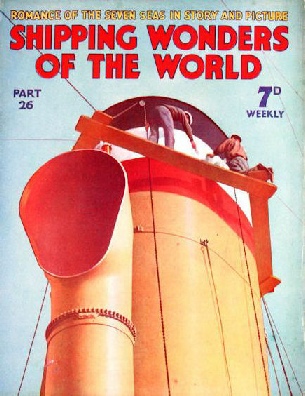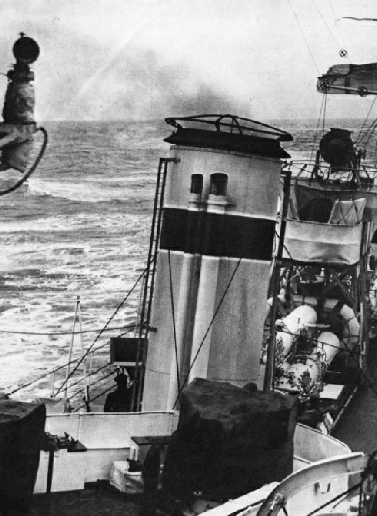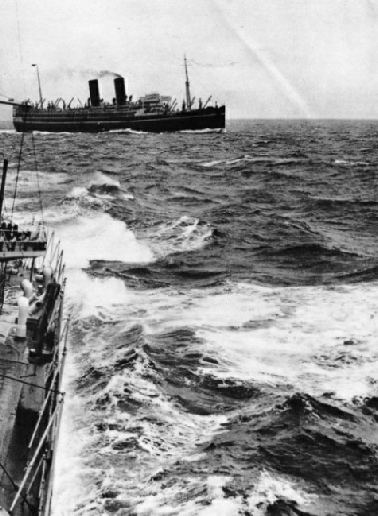
© Shipping Wonders of the World 2012-



Part 26
Part 26 of Shipping Wonders of the World was published on Tuesday 4th August 1936. This issue completed volume 1 of Shipping Wonders of the World.
It included a centre photogravure supplement featuring destroyers of the Royal Navy, which formed part of the article on Greyhounds of the Fleet.
The Cover
This week’s cover of Shipping Wonders of the World shows a scene on board the Kaiser, of the Hamburg-Amerika line . The white band that divides the red from the black of her funnel must be painted every other day if it is to be kept spotless, and our picture shows men doing this. The Kaiser, 1,900 tons gross, was built in 1905, and she is 303 ft 1 in long, with a beam of 38 ft 5 in and a depth of 13 ft 3 in.

Contents of Part 26
The Fortunes of War
The story of the Seeadler, concluded from part part 25.
The Britannic and the Georgic
The elegant lines of the sister ships Georgic and Britannic make them among the most striking modern vessels afloat. They are regularly engaged on the transatlantic services and are two of the largest motor-driven ships in the world. Although compare with, for example, the
Queen Mary or the Bremen, neither the Georgic nor the Britannic is a large ship, they are, however, two of the world’s largest motor ships. The Britannic and the Georgic are sister ships, but the Georgic has a slightly larger tonnage.
This chapter is the seventh article in the series the World’s Largest Ships. A photograph of the Georgic under construction appears in the chapter “Building a Liner”.
The Convoy System
The protection of food supply ships is always of paramount importance to a nation at war. The convoy system in various forms has been adopted for this purpose by almost very maritime nation since sea transport began. The possibility of starvation in a country that depends on overseas supplies for the greater part of its foodstuffs is always to be taken into account. The first duty of the Navy is considered to be the protection of commerce, especially the food ships. This can be done by the protection of merchant ships through the danger areas by means of a system of convoys.
Greyhounds of the Fleet
The destroyers of the Royal Navy are among the fastest vessels afloat. Their main duty in wartime is to screen the battle fleet, especially from enemy submarines and destroyers, and, if necessary, to make torpedo attacks.
This chapter is the seventh article in the series The Navy Goes to Work.
Greyhounds of the Fleet (photogravure supplement)
Escorting a Treasure Ship
ESCORTING A TREASURE SHIP. This photograph was taken from HM destroyer Veteran, which escorted the P & O liner Ranpura, 16,688 tons gross, on a stage of her journey to China with priceless art treasures on board. The precious cargo had been exhibited at the unique Chinese Art Exhibition at Burlington House, London, in 1935-36. The Ranpura ran aground off Gibraltar, and experienced stormy weather during most of her passage. HMS Veteran has a speed of 34 knots and her turbines have a designed shaft horse-power of 27,000.
Greyhounds of the Fleet: Photogravure Supplement
THE SPEED OF A DESTROYER is well illustrated by this striking photograph of HMS Umpire. She was completed in August 1917, and was placed out of commission ten years later. HMS Umpire was 265 feet long between perpendiculars and 276 feet overall. She had a beam of 26 ft 9 in and a maximum draught of 11 ft 9 in. Her displacement was 1,091 tons.



